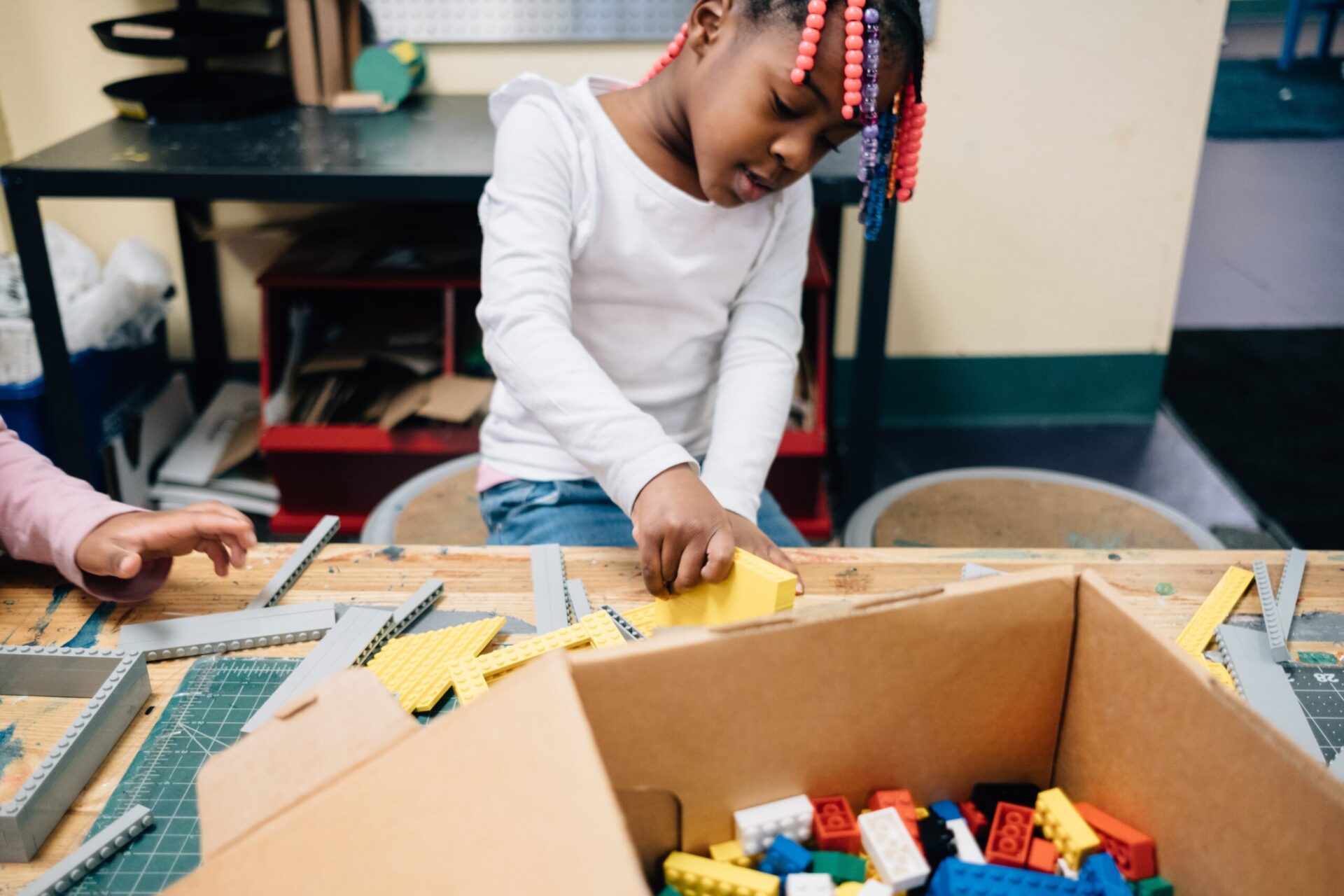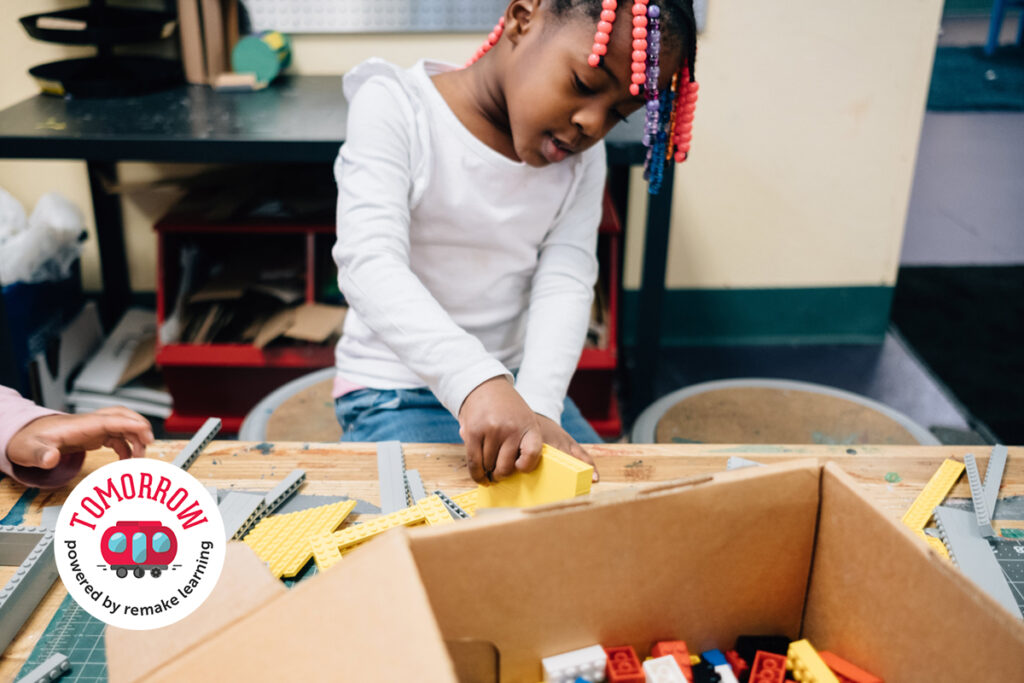When the seeds for Pittsburgh’s learning ecosystem were planted, pandemics were the stuff of history lessons and Hollywood movies. The goal back then—a decade ago—was simply to use the strengths of the whole community to support young learners.
Year by year, collaboration grew among K-12 schools, science centers, museums, universities, nonprofits, foundations, parks, makerspaces, local businesses and others throughout the region.
A wide range of projects and connections continue emerging from this work. Each one is another step toward a tomorrow where students are prepared for their 21st-century lives and communities can tackle long-standing problems like social injustice.
None of this was designed with a real-life pandemic in mind. But when COVID-19 emerged in early 2020, the connections between members of this ecosystem—and the flexible thinking baked into the learning ecosystem model—helped the Pittsburgh region cope with the sudden disruption of schooling.
Creative solutions sprouted quickly. Just a few among dozens of examples: Cornell School District was able to secure WiFi access for all of its students during remote learning thanks to collaboration between the University of Pittsburgh, Carnegie Mellon University, local businesses and a nonprofit called Meta Mesh.
The nonprofit Circles Greater Pittsburgh took up the mission of making sure learners throughout the region had digital devices, and soon they were coordinating donations of laptops from numerous organizations, including Pittsburgh-based ed tech giant Duolingo and the Pittsburgh Penguins, as part of the Pittsburgh Learning Collaborative.
Meanwhile, the Carnegie Science Center built out their online offerings to make sure all kids had free access to science and technology. Other local museums did the same, helping to fill in where schools were struggling and keeping kids excited about learning.
And out-of-school-time providers swiftly opened as school day Learning Hubs, supporting learners during the pandemic and setting the stage for further collaboration in the future.
Existing partnerships played a vital role in making all of this possible, says Amy Malen, assistant deputy director at Allegheny County’s Department of Human Services. And cooperation grew further as people grappled with new challenges.
Educators, of course, have had a massive challenge on their hands. These months have not been easy. Problems remain. But Pittsburgh-area communities have been better able to withstand the disruption of schooling—and will be better able to tackle problems like learning loss and inequity going forward—thanks to the learning ecosystem in the region.
That leads us to a powerful question: What if every region of the country had this same advantage?

A National Solution to a National Problem
The issues Pittsburgh faced as it began growing its learning ecosystem remain at play in cities nationwide: Today’s education system was never designed to meet modern learners’ needs.
“This incongruity has heaped systemic problems upon individual educators, blunted the effectiveness of reforms, and shortchanged the nation’s most vulnerable young people—outcomes exposed and exacerbated by COVID-19,” Gregg Behr wrote in a proposal published in February by the Day One Project.
Behr, the executive director of the Grable Foundation, is the founder and co-chair of Remake Learning. This network, which has grown to include more than 1,000 members across a wide range of sectors, is the connector that has helped build and grow southwestern Pennsylvania’s learning ecosystem.
In his Day One proposal, Behr advocates for spreading this successful approach to communities nationwide.
“Building back better in a post-pandemic United States will require federal investments not only in schools, but in ‘learning ecosystems’ that leverage and connect the assets of entire communities,” Behr writes in this proposal. “Tasked with studying, seeding, and scaling these ecosystems in communities across the country, a White House Initiative on Community Learning Ecosystems would signal a shift toward a new education model, positioning the United States as a global leader in learning.”
The need, Behr notes, is clear: “For decades, the shortcomings of what was once considered ‘normal’ were well documented in middling international rankings and yawning opportunity gaps. Despite the invaluable, even heroic work of American educators, schools alone are no longer sufficient for addressing the complex needs of today’s learners—a fact made plain by COVID-19.”
The desire among families and educators to build something new and different in the pandemic’s aftermath is also clear.
“There’s a huge opportunity now to not go back to ‘normal,’ but to actually invent a whole new way of organizing and supporting and credentialing learning,” Kelly Young, president of Education Reimagined, told Remake Learning’s Tomorrow campaign last year.
As this new learning landscape takes shape, each community’s schools, parks, libraries, museums, nonprofits and other organizations can use their specific strengths to support young learners in whatever ways they believe are most valuable.
“Nearly every community contains the components of effective learning ecosystems,” Behr says.
To make the most of these resources, the federal government could begin by creating a national commission to study learning ecosystems in the U.S. and abroad to identify best practices. Policy could then be designed to strengthen ecosystems that exist and help new ones take root.
The learning ecosystem model lends itself perfectly to this process, because it’s all about freely sharing innovative ideas.
Last fall, the global nonprofit HundrED shared information about 16 innovative, easily scalable practices that began in learning ecosystems in the 16 regions of the U.S. where the Remake Learning Days Across America festival will be held this year.
The organizations that HundrED included in the Learning Forerunners Across America report all shared ideas that could be replicated and adapted in other communities. This same focus on sharing ideas and innovations can be seen in the work of organizations like the Washington, D.C.-based Afterschool Alliance, the national nonprofits CommunityShare and MakerEd, and in the global community of practice created by STEM Learning Ecosystems.
By harnessing the collective discoveries made by organizations like these, a national initiative to develop learning ecosystems would transform the way American students learn and the way communities prepare young people for the future.
“While schools have long been bastions of progress thanks to the work of educators, the current system’s one-size-fits-all model was never designed for the connected, quickly changing world in which students now live,” Behr says. “Rather than reforming the current model, learning ecosystems augment and transform it.”
Learn more about the call to invest in community learning ecosystems and create a White House Initiative here.
